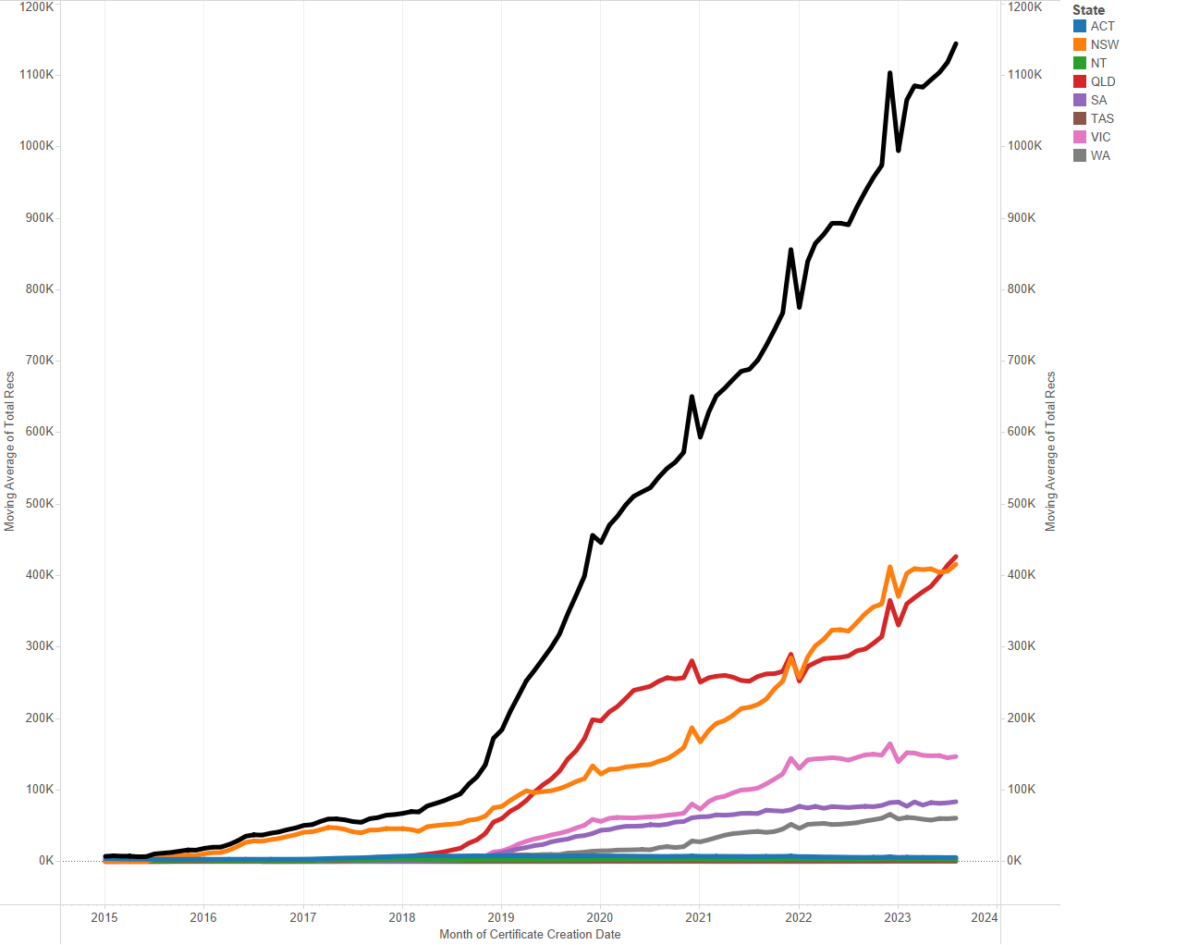Recent analysis from solar and storage analyst Sunwiz shows Australia’s large-scale renewable segment is languishing.
Looking at the Sunwiz graphs breaking down large-scale certificates (LGCs) registered in each state, the graphs reveal the segment is utterly flat in most regions.
“Look at how much flatness there is. It’s only really Queensland that is going up right now,” Sunwiz’s Warwick Johnston tells pv magazine Australia.
In the last three years, both Queensland and New South Wales (NSW) have pulled way in front of the other states. Nonetheless, even NSW has had an incredibly flat 2023.
These figures encompass both utility-scale renewable generation projects as well as larger commercial and industrial installations, Johnston notes. “There will inevitably be more businesses putting solar on in the coming six months, and so the pressure that has built up will get released in that [C&I] segment.”
“But such a stall that has occurred at the level of grid-scale solar, we don’t see it being resolved – not in any fast, quick and soon way,” Johnston says.
Slow transition could lose social licence
“The energy transition in Australia is at risk of losing its social license if we continue to go so slowly because people will face high electricity prices if coal isn’t replaced with renewables,” the Sunwiz MD added.
“There’s a lot of barriers there that absolutely have to be addressed so we can get cheap, bulk energy. But we need that cheap bulk energy now and in the coming two, three years.”
“If we continue to remove subsidies from small-scale, and while we’re waiting around sitting on our hands for the problems to be solved in large-scale, isn’t that a pretty risky thing to be doing? Why are we reducing subsidies from the only thing that’s working right now?”
Here Johnston is referring to the gradual winding back of Australia’s small-scale certificate scheme, which will end completely in 2030.
Johnston suggests one way to get things flowing better would be to make commercial solar up to 1 MW eligible for STCs.
In his eyes, “not enough” is happening in the regulatory space to start solving the issues of grid scale solar, including approval delays, grid connection and transmission
This content is protected by copyright and may not be reused. If you want to cooperate with us and would like to reuse some of our content, please contact: editors@pv-magazine.com.









Hello, do you know if large scale solar has the same issues as rooftop solar in terms of chinese made inverters and panels?
Thank you,
Andrew
Hi Andrew, what do you mean by issues? Do you mean is the segment still dominated by Chinese manufactured products?